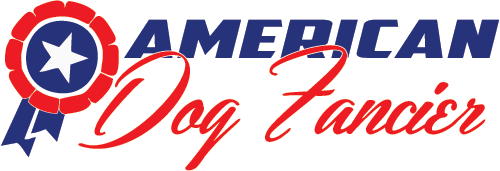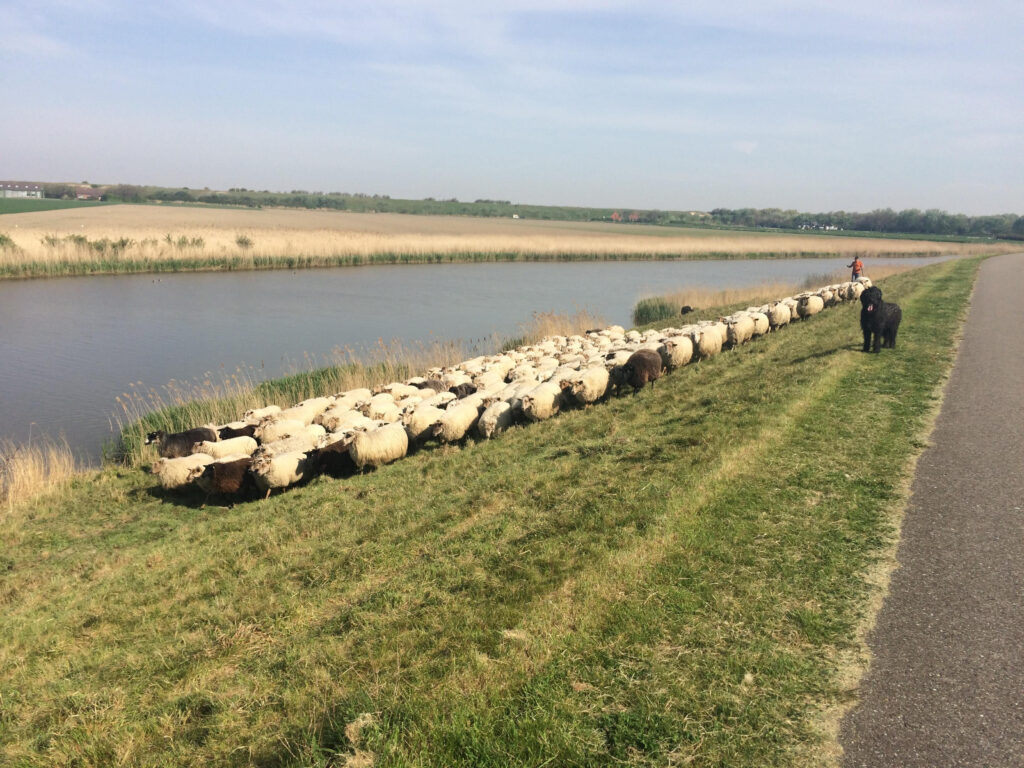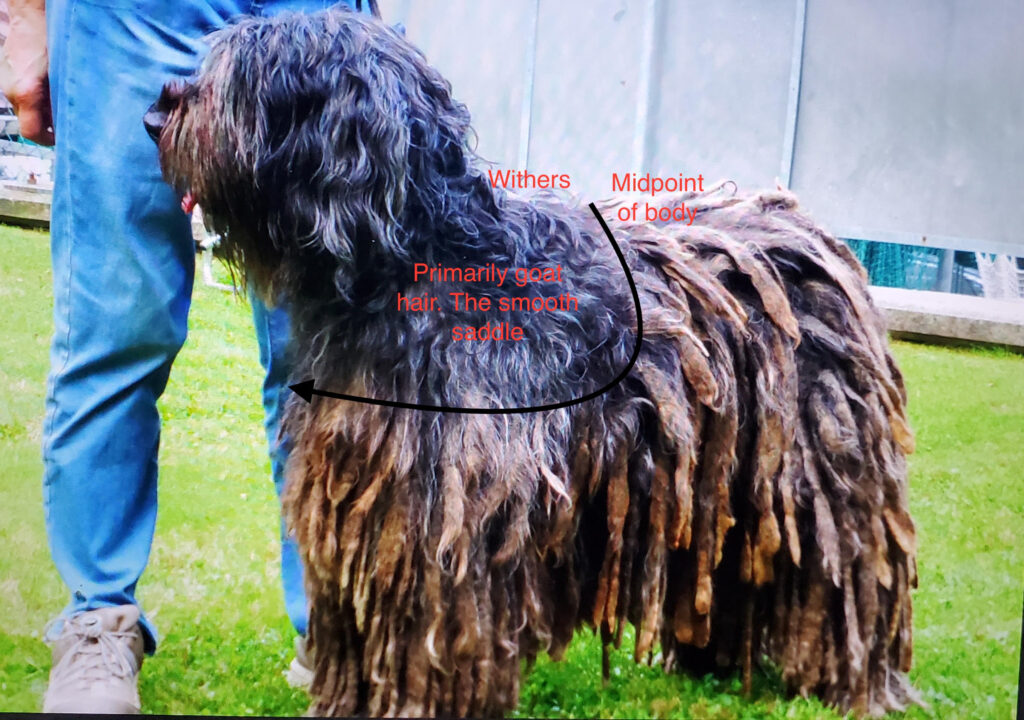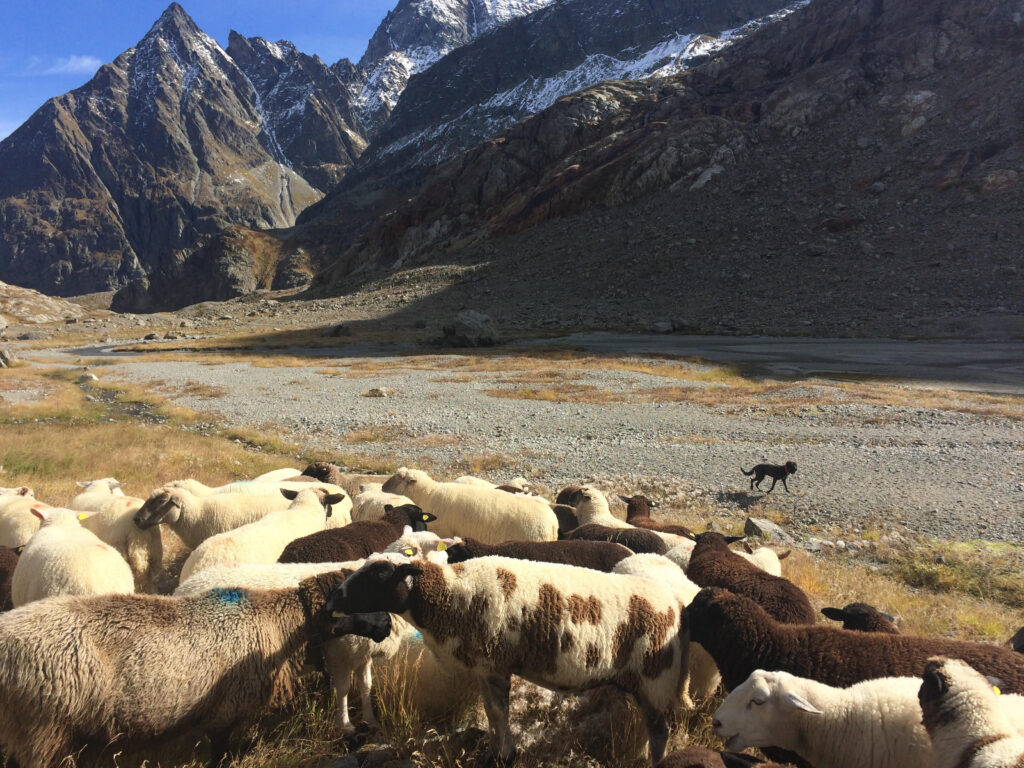Keeping the Bergamasco True to it’s Origins
A bit on history and genetic origin
By Jeanine Dell’Orfano
Photos Submitted by Jeanine Dell’Orfano
The Bergamasco Sheepdog is a medium sized rustic breed with origins in the northern Italian and Swiss Alpine regions characterized by it’s flocked coat which looks like felts of wool. The Bergamasco Sheepdog (Cane Da Pastore Bergamasco) originated in the Alpine arch from a more broadly distributed European stock dog. According to a 2018 genetic study on Italian herding breeds there have been observed signatures of haplotype sharing between the Bergamasco Shepherd and the Briard and Bernese Mountain Dog, the Lupino del Gigante and Leonberger, and the Cane Paratore and Boxer. These patterns of haplotype sharing between breed pairs indicate that each Italian herding population diverged from the others through its individual introgression with outside breeds and that they are not merely geographically separate populations of the same breed. This means that these all shared a common ancestor, however the difference between them is that they have since mixed with other breeds. A shared signature is present at high levels in all Cane Paratore, Pastore della Lessinia e del Lagorai, and the non-Italian Standard and Miniature Xoloitzcuintle, Peruvian Inca Orchid, and Catahoula Leopard Dog. Interestingly, the shared signature is also present in approximately half of the Bergamasco, Pastore d’Oropa, and Lupino del Gigante dogs, suggesting that those breeds demonstrate less cohesion than most well-established breeds. Science is pointing to the Bergamasco’s origins as a pure-breed as recent as a few hundred years ago.
As a Herder
Herding abilities come from the dog’s original instinct to hunt. Herding behavior is nothing more than modified prey drive. There are three main different styles of herding: Driving, fetching and tending. The Bergamasco Sheepdog is primarily a tending breed. Tending dogs were developed for the type of work that was needed in European agriculture a few centuries ago. Some examples of other tending breeds are the Belgian Malinois, Belgian Sheepdogs, Belgian Tervurens, Bouvier des Flandres, Briards, German Shepherds, Beauceron, Pyrenean Shepherds and Pulik.
Bergamascos are sometimes erroneously referred to as livestock guardians. While they do have protective instinct, they do not bond with livestock for the purpose of protecting them as a main focus. While working, the Bergamasco performs a combination of instinctive behaviors with human direction. Tending requires the dog to act as a living fence, guiding large flocks of sheep, goats or cattle, to grazing areas while preventing them from eating valuable crops, wandering into roads or to keep them on designated paths. Tending breeds have a natural instinct to pick up a boundary and to work their stock from that boundary. It could be a furrow, a division from crop fields to grass, a roadway, a sidewalk etc. Tending breeds will define these boundaries naturally, and without being told, understand how to prevent stock from crossing their limits. Tending dogs patrol their boundaries and allow for stock to have grazing time while expending minimal physical effort and without frightening the livestock. They usually work from the head of the flock where the Shepherd is positioned, to the rear of the flock. This is different from a driving or fetching breed of Sheepdog. Bergamascos as well as other breeds of sheepdogs can learn to work different styles of herding but usually are best at their natural style. So while the Bergamasco is not a fetching dog or a driving dog, it can be taught to do those things.
The Bergamini herdsmen were the first example of Italian transhumance who travelled the Bergamo Valley in the Alps and Lombardy region. They began the stricter selection of their dogs for the ability to handle the difficult and almost inaccessible mountainous terrain, while performing the dangerous task of guiding cattle to grazing lands by working from the head to the tail of the herd. The Bergamascos kept the large herds of cattle together, guiding them through hazards and protecting them during the night from predators.
As agricultural needs changed, the Bergamasco became associated with guiding flocks of sheep in the same tending style as it did with cattle. Primarily though, this breed was a cattle dog and not a “sheep” dog as commonly believed.
In the Spring, the Bergamasco Sheepdogs were shorn and would grow back enough coat before the winter to keep them warm throughout the cold months. Due to the perilous terrain in which the Bergamasco had to work, there is no way a Bergamasco in a long and heavily flocked coat could have worked efficiently or even at all. The Shepherds had too much respect for their prized dogs to allow them to be burdened by a heavy coat. This would sacrifice performance and keep them unsanitary.
There are still some Bergamascos that work in their native land. Dolce, a talented black bitch in Switzerland is one of them. Dolce’s owner Rahel Koller said “I started herding sheep because Dolce needed to keep busy and she showed a good instinct for the sheep. We trained the first 5 to 6 years with upwards of10 sheep, like the Border Collies and the same exercises and rarely with 30 sheep. Then I was in Germany with a wandering shepherd and Dolce for the first time had 1000 sheep in front of her. There I could recognize her instincts for the first time (boundary work). She was 4 years old then. After that there were always between 10 and 60 sheep. We are now working with large flocks of several hundred sheep. Dolce is an all-rounder But in the meantime I prefer the boundary work.”
Here in the United States, there is little need for tending but many choose to develop and use the natural abilities of their dogs for preservation, personal farms and for herding trials. AKC has a C course designed for tending breeds which mimics the way they would have worked in agricultural Europe.
It is almost impossible to talk about the Bergamasco Sheepdog without mentioning it’s most discernible feature, the coat.
The Coat
The Bergamasco coat is made up of three types of hair: the undercoat, goat hair, and the wooly coat (top coat). These three hairs are distributed in different ratios on different parts of the dog’s body. The three types form an interwoven matrix which creates the “flocks” as they are called. They are not referred to as “cords” in this breed, as they are with the Puli and Komondor. The difference is that flocks are larger, flatter and can be irregular in shape due to the abundance of goat hair mixed with the wooly hair.
During puppy-hood, only the soft puppy coat is present. This requires regular brushing as would any other dog. The coat begins to mat anytime from 7-12 months. There are variations to this time frame. The puppy hair molts during this time. This is the most critical period for coat care. The clumps that begin to form at this time must be separated by hand by ripping the clumps into segments of 2-3 finger widths. This ripping must be reinforced often until the flocks are fully formed and no longer re-clumping together. Once fully formed, the flocks will continue to grow for the life of the dog. Because the head, face and front of the neck and upper chest should be primarily “goat hair” there should be no flocking in this area but on a wooly coat this is not always the case. Keeping the face and head brushed and free of flocks is more sanitary for the dog.
Clarification is needed as to why dogs in the show ring presented this way are not “over-groomed”, they are actually correct. They stand out as wrong or over-groomed because it is so rare to see and they are typically the odd one out. It also does not correlate at all with the illustrated breed standard which makes it even more confusing. This is what is referred to as “doppio pelo” or double coat. This is also confusing because we know the Bergamasco has a triple coat. The triple coat is referring to the three types of hair and doppio pelo is referring to the fact that the coat is different on the front and back portions of the body. There is a lot of confusion about the Bergamasco coat. Obviously we see two types. You may hear that the Bergamasco standard regarding the coat is different in AKC vs. FCI. This is not so, but the problem is that the description is open to interpretation because when it was translated from Italian, it was not a clear translation.
The AKC standard reads:
Coat: The Bergamasco coat is made up of three types of hair: Undercoat, “goat hair,” and outer coat. The undercoat is short, dense, and of fine texture. It is oily to the touch and forms a waterproof layer against the skin. The “goat hair” is long, straight, and rough in texture. The outer coat is woolly and somewhat finer in texture than the “goat hair.” The “goat hair” and outer coat are not distributed evenly over the dog and it is this pattern of distribution that is responsible for the formation of the characteristic flocks (strands of hair weaved together creating flat layers of felted hair). Each flock of hair ranges in width anywhere from inch and half to three inches wide. The coat from the withers down to the midpoint of the body is mostly “goat hair” which forms a smooth saddle in that region. On the back of the body and the legs, the woolly outer coat is abundant and mingles with the reduced quantity of “goat hair” in that region to form the flocks. The flocks are larger at the base than the end, flat, irregular in shape, and may sometimes open in a fan-shape. The hair on the legs also hangs in flocks rather than feathering. The flocks are never combed out. The hair on the head is mostly “goat hair” but is somewhat less rough in texture and hangs over the eyes.
When you see it visually in the image in this article, the description becomes clear. This is why you would not naturally have flocking on the front portion (head,neck to top of sternum back to just behind the withers at the midpoint of the body forming the saddle) of the dog with a correct coat. So why don’t they all look this way? It is because in a breed this rare, coat selection for breeding does not take priority. Should it be considered and should we be paying attention to this as breeders, yes absolutely. We need to breed for correct coats but when you are dealing with genetic bottlenecking and health issues, selecting for this goes on the back burner. Now that we are testing more and more and our dogs are getting healthier in some of our programs, we can start to really pay attention to this detail. Why is it even important? Because it’s what is true to the breed and this detail, although seemingly unimportant, is what allows the breed to work tirelessly by not being weighted down by a heavy wooly coat all over the body while trotting and ascending and descending mountainous terrain while working.
As dogs began showing in Europe, this coat also became less important as these dogs didn’t require alleviation of the weight of hair in front of the shoulders and tripping over long coats while working in the mountains was not an issue. We start to see the heavier coats in these show dogs over time. If the wooly hair was coming in on the front part of the body it would cause flocking there and it was not a problem for the show ring. Many purists continued to breed a proper coat and many of these specimens can be found in Europe today, but it is rare to see in the United States unless you are looking at imported dogs, their offspring or the odd throw back.
So how important is the coat when judging a Bergamasco? Considering all other virtues of the dogs are equal, then it matters.
Preservation of the Bergamasco is no easy task. The difficulties are compounded by having different standards on different continents which sometimes meet in the middle and other times are on more extreme ends of their standards. Sustainable breeding of the Bergamasco began in the U.S. in the 1990’s and started with a departure from the standard of the country of origin. This standard became the AKC standard. Other than some disqualification differences, the main difference is in the length of body. AKC calling for a longer than tall dog and FCI calling for square. The Bergamasco body length has been an ongoing bone of contention. When kept to the 5-6% longer than tall formula, we meet somewhere in the middle. Unfortunately we are seeing trends that are pulling the Bergamasco farther from it’s ability to perform it’s functions. Some structural deviations that we are seeing in the ring are:
1. Standard says: The line of the back inclines very slightly downward from prominent withers to a strong, broad back. The loin is well-muscled and broad. The croup is slightly sloping, about 35 degrees downward from the horizontal.
We are seeing dipping toplines with a rise over the loin. We are also seeing excessive length in the loin well past the 5-6% longer than tall description in the standard. The length of the dog should be in the ribs and not the loin.
2. Standard says: Viewed from behind, the rear pasterns should be vertical and parallel to one another. Viewed from the side, the rear pasterns are vertical and placed so that the hocks just slightly extend past a vertical line dropped from the point of buttock.
Cow-hocking is not acceptable.
3. Standard says: The shoulder blade is moderately laid back, about 60 degrees from the horizontal. The shoulder blades should be tightly knit. Upper Arm – The upper arm is just slightly longer than the shoulder blade. The angle formed by humerus and shoulder blade is about 115 degrees.
We are seeing excessively short forearms giving the dog a downhill appearance and downhill movement.
All of these structural changes matter because they will affect the Bergamasco’s movement and ability to work as they have throughout history. The main goal is that this breed can do it’s job and work tirelessly and effortlessly in it’s native terrain by way of instinctive methods. Who are we to change what has worked for centuries? Not only change it, but have no way to measure it’s effects on the task.
A temperament suited for purpose
The Bergamasco is intelligent, capable of problem solving and has good common sense. They are loyal and deeply connected to their families and always want to be with them. They can be emotionally sensitive. Puppies require ample socialization as they can be wary of strangers. They are protective and alert, loud and imposing when needed but typically not aggressive. They are active, athletic and playful, full of energy when it suits them and stubborn when it doesn’t.
Remembering some of the points in this article helps in keeping a consistent idea of what we need to remember when looking at a Bergamasco. It always comes back to the original function of the breed. Preservation breeding to me, means holding true to origin. I have been a breeder of the Bergamasco for the last 15 years, former parent club President and AKC Judge educator for 8 years. Rare breeds will not stay true to their origins if proper education is not out there for breeders and judges to access. It is my hope and the hope of many breeders, that the Bergamasco will continue to thrive in health, soundness, performance and character for future generations to enjoy.





